今天的主題是延續Day04 幾何資料基本運算,在GIS向量資料中,除了Day04常見的幾何處理項目以外,今天試著補充shapely中一些GIS經典的幾何計算功能,由於shapely被依賴於Geopandas中,因此相關操作可以在GeoDataFrame中延伸。
shapely的interpolate滿方便的,我們知道向量資料包含了點線面,線與面是由一序列的點組成的,shapely的interpolate提供了一個方法,可以在這樣的序列資料中,沿著序列的方向內插一個點。
有關向量資料,請參考[Day 11] WebGIS中的向量圖層-除了點資料以外的幾何 - iT 邦幫忙::一起幫忙解決難題,拯救 IT 人的一天
為此,我們先產生兩個線做說明
import geopandas as gpd
from shapely.geometry import LineString,Point
line1 = LineString([(0, 0), (50, 50), (100, 100)])
line2 = LineString([(10, 0), (60, 50), (110, 100)])
lines = gpd.GeoDataFrame()
lines['geometry'] = [line1,line2]
lines.plot()
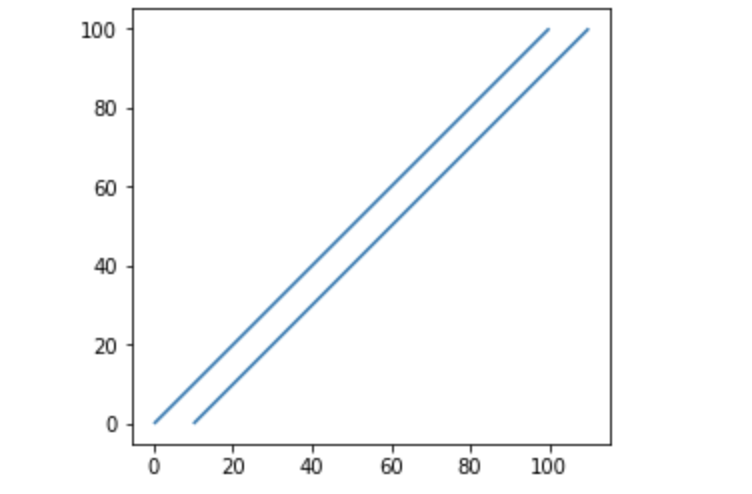
接著分別對資料做內插,其中distance是要內插的距離
base=lines.plot()
points = gpd.GeoDataFrame()
points['geometry'] = [row['geometry'].interpolate(50) for idx,row in df.iterrows()]
points.plot(ax=base)
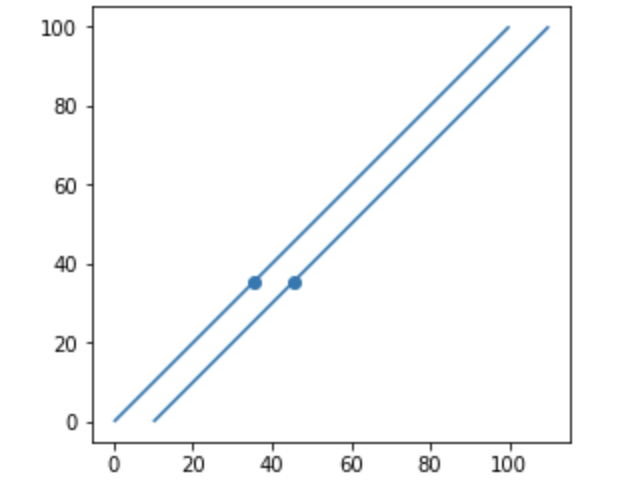
內插多個點
base=lines.plot()
points = gpd.GeoDataFrame()
intpoints=[row['geometry'].interpolate(50) for idx,row in df.iterrows()]
intpoints+=[row['geometry'].interpolate(25) for idx,row in df.iterrows()]
intpoints+=[row['geometry'].interpolate(75) for idx,row in df.iterrows()]
points['geometry'] = intpoints
points.plot(ax=base)
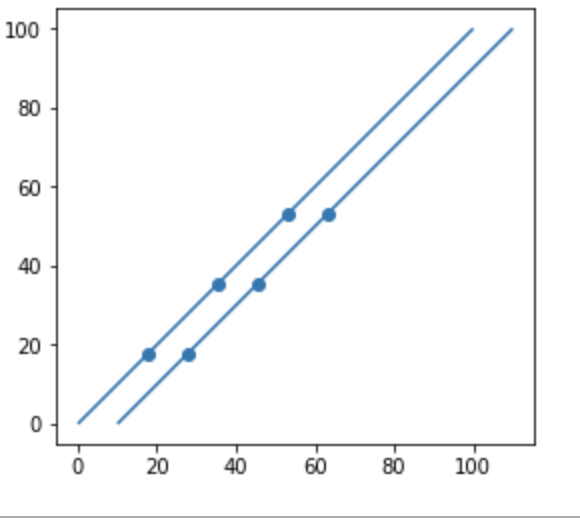
shapely的project這個方法的意思跟地圖投影無關,
而是計算線外一點投射到線上距離,可以說成是點對線的投影距離。
直接用案例來看:
LineString([(0, 0), (50, 50), (100, 100)]).project(Point(50,0))
回傳值=35.3553390
我們把圖畫出來
lines = gpd.GeoDataFrame()
lines['geometry'] = [LineString([(0, 0), (50, 50), (100, 100)])]
base=lines.plot()
points = gpd.GeoDataFrame()
points['geometry'] = [Point(50,0)]
points.plot(ax=base)
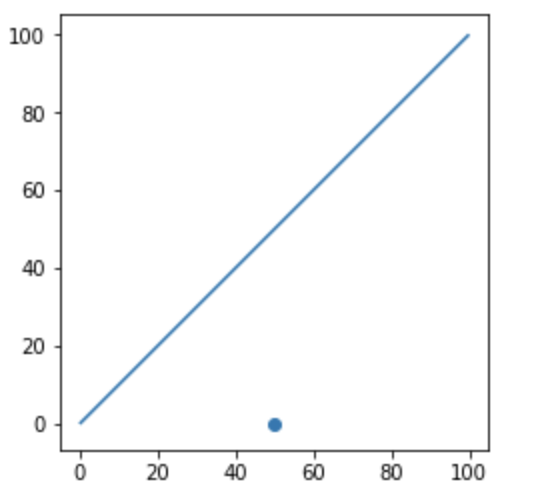
project方法提供的,是(50,0)這個點,投影在線上的點p,這個點p距離線的原點(0,0)的距離
再看一個例子,這次我們特意把點指定在線上(投影就是自己)
lines = gpd.GeoDataFrame()
lines['geometry'] = [LineString([(0, 0), (50, 50), (100, 100)])]
base=lines.plot()
points = gpd.GeoDataFrame()
points['geometry'] = [Point(50,50)]
points.plot(ax=base)
LineString([(0, 0), (50, 50), (100, 100)]).project(Point(50,50))
回傳值=70.710678
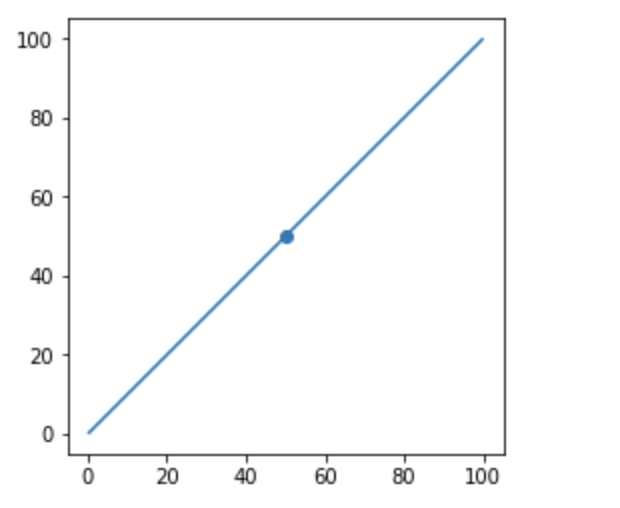
其中,70.710678其實就是(50,50)到這條線的原點(0,0)的距離
de-9im全名是(Dimensionally Extended nine-Intersection Model),是一個GIS位向關係描述的模型及標轉,這個模型描述了兩個幾何物件的關係,它把兩個幾何物件的關係以物件的I(Interior),B(Boundary),E(Exterior),兩物件之間的幾何關係以此3*3內的關係來判斷,這個矩陣就是de-9im,以下圖為例: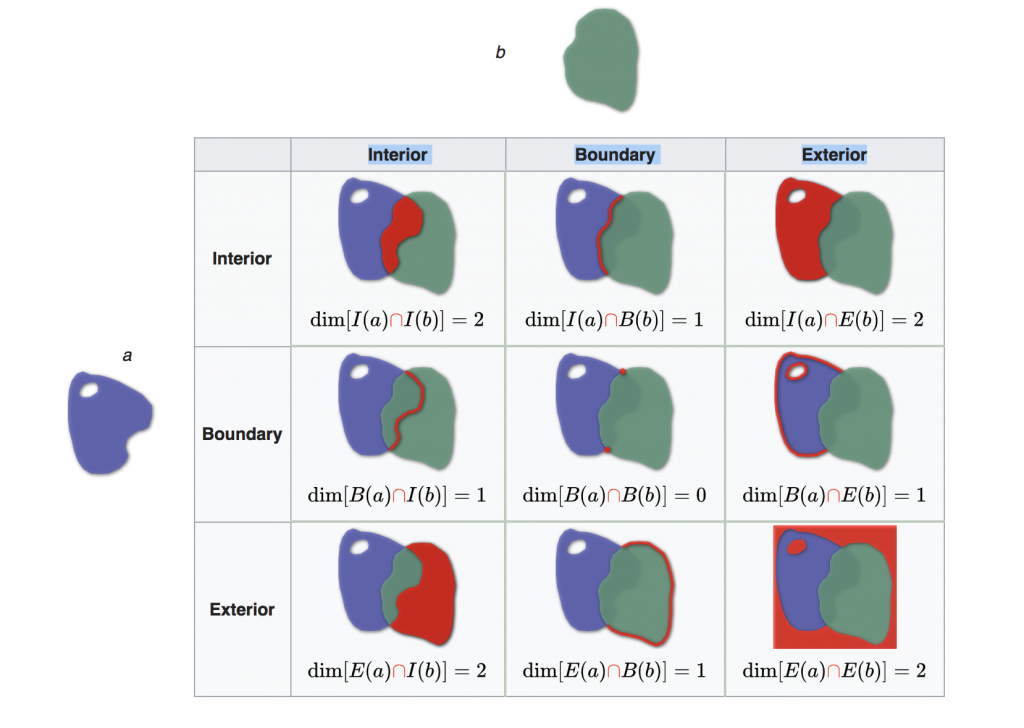
[取自DE-9IM - Wikipedia]
上圖範例中,a及b為兩個面,他們之間的關係按I, B, E三個觀點切入,在矩陣內的Dim()函數表示此關係的維度。如果相交部分點則為0,線則為一維,dim()=1,面則dim()=2,而不相交為dim()=-1,de-9im的讀法可以中從上往下、從左往右將數字集合起來如本案例的212101212,這串數字就用來表達這兩個物件的關係。
這樣的模型再把它簡化一點,我們把維度dim()簡化成相交(0,1,2維)與不相交(-1),分別以T與F表示,配合I, B, E三個角度的判斷,這樣也可以拿來描述兩個幾何物件的關係。
另外,我們常用的幾何物件關係的描述,若以de-9im表示,
其實並不需要9個元素都判斷就可以判斷他們是否符合這個關係,
例如以上兩個面相交的例子:
實際上它是TTTTTTTTT
事實上只要知道第一個T,就可以決定這種關係T********
又例如兩個面分離(Disjoint),他應符合:FF*FF****
我們直接來測試,把第三天的資料再來拿看看
更多的幾何關係可以參考Spatial Relations Defined
p1=gpd.read_file('output/Library.shp',encoding='utf-8').head(1)
p1.crs = {'init' :'epsg:4326'} # 避免資料沒設,這邊再重新給一次
p1=p1.to_crs(epsg=3826)
p1['geometry']=p1.buffer(30).translate(xoff=20.0, yoff=0.0)
p2=gpd.read_file('output/Library.shp',encoding='utf-8').head(1)
p2.crs = {'init' :'epsg:4326'} # 避免資料沒設,這邊再重新給一次
p2=p2.to_crs(epsg=3826)
p2['geometry']=p2.buffer(30)
base=p1.plot(color='blue')
p2.plot(ax=base,color='brown')
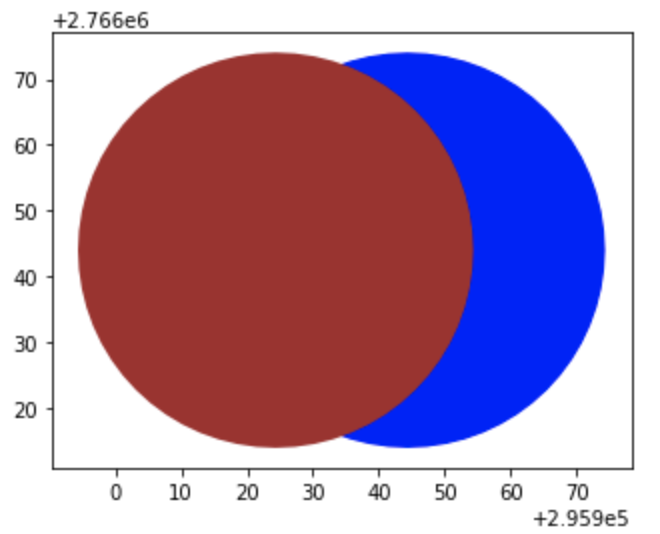
由於Geopandas的geometry是依賴於shapely,使用relate這個方法
看看他的de-9im的值
p1.at[0,'geometry'].relate(p2.at[0,'geometry'])
回傳值=212101212
今天的相關測試可以參考GitHub
